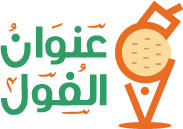The Most Common Types of Drug Addiction
Notably, 70% of individuals who try an illegal drug before age 13 develop a substance https://ecosober.com/ use disorder within the next seven years, according to drug abuse statistics published by NIDA. The primary goals of drug abuse and addiction disorders treatment (also called recovery) are abstinence, relapse prevention, and rehabilitation. During the initial stage of abstinence, an individual who suffers from chemical dependency may need help avoiding or decreasing the effects of withdrawal. The medications used for detox depend on the drug the person is dependent upon. The primary types of drug addiction include alcohol addiction, opioid addiction, stimulant addiction, and sedative addiction.
How Does Drug Addiction Differ From Dependence?
Below is a list of drugs, including alcohol and tobacco, and how each one affects the brain and contributes to substance use disorders. However, it’s not just illegal drugs, such as cocaine or heroin, that can lead to abuse and addiction. Prescription medications such as painkillers, sleeping pills, and tranquilizers can cause similar problems. In fact, next to marijuana, prescription painkillers are the most abused drugs in the U.S. and more people die from overdosing powerful opioid painkillers each day than from traffic accidents and gun deaths combined.
Heroin Addiction: Definition Symptoms, Causes, Effect, Treatment and Prevention
Cravings intrude on thought processes, create considerable distress, and focus attention on immediately satisfying the Drug Addiction (Substance Use Disorder): Symptoms and Treatment desire for the substance. Cravings can be seen in brain imaging studies as areas of heightened activity in the reward center of the brain in response to specific environmental signals that have been connected to drug use through experience. Those who become addicted are usually acutely aware of their own behavioral shifts and especially how they are disappointing others, even as they rationalize away their behavioral anomalies.
- The harm inflicted on oneself or someone else occurs due to behavior related to intoxication, damage to internal organs, or the route of administration.
- Finally, the arts can be used to advocate for those suffering from a substance use disorder by raising awareness of the issue and promoting understanding and compassion.
- Dr. Wakim is a board-certified psychiatrist with a passion for and expertise in addiction, mood disorders, trauma-related disorders and the subspecialty of interventional psychiatry.
How are addictions diagnosed?
- Intoxication with alcohol is a major cause of traffic accidents and violence to others.
- While the 2 are different conditions with separate signs and symptoms, treating the cause of PTSD can mitigate or eliminate the underlying addiction.
- As with other diseases and disorders, the likelihood of developing an addiction differs from person to person, and no single factor determines whether a person will become addicted to drugs.
Family therapy is frequently recommended as part of the treatment process to address these issues, heal relationships, and improve communication and coping strategies. Financial difficulties are also common, as resources are diverted towards sustaining the addiction or dealing with legal troubles. In terms of emotional effects, family members often feel a range of emotions from guilt and shame to anger and fear.
Stimulant Abuse
Some examples of Schedule IV drugs are narcotics, muscle relaxants, and commonly prescribed medications for anxiety and depression, such as alprazolam. In 2024, the National Drug Control Budget requested $44.5 billion across agencies focused on expanding efforts to reverse opioid overdoses, disrupt the drug supply chain, and provide support for prevention, treatment, and recovery. The cost of drug abuse in the US is nearly $820 billion per year, taking into account crime, healthcare needs, lost work productivity, and other impacts on society. Drug abuse and misuse of prescription drugs is generally more prevalent in Sobriety males than in females. Substance use is a treatable condition and complete remission is entirely possible. Recovery, however, is often a long-term process that may involve multiple attempts.







